Making history: These 5 timepieces set world records at Watches and Wonders Geneva 2025
From the world’s thinnest tourbillon with a price tag of over S$1.1m to the most complex wristwatch ever made with 41 complications, these horological marvels prove that watchmaking’s future lies in bold engineering and thinking out of the box.

At Watches and Wonders Geneva 2025, five timepieces stood out for pushing the boundaries of what’s physically and technically possible in modern horology. (Photos: Courtesy of respective brands)

This audio is generated by an AI tool.
Records are meant to be broken and nowhere was that spirit more alive than at Watches and Wonders Geneva 2025. While every maison brought its A-game, five timepieces stood out not just for their beauty or craftsmanship, but for pushing the boundaries of what’s physically and technically possible in modern horology.
Vacheron Constantin unveiled the world’s most complicated wristwatch boasting 41 complications. Bvlgari reaffirmed its dominance in ultra-thin watchmaking with its 10th world record – the slimmest tourbillon ever made. Ulysse Nardin introduced the lightest mechanical dive watch in the world that weighs less than a tennis ball.
Elsewhere, Parmigiani Fleurier made material history with the first watch to be rendered in the avant-garde alloy Cermet. And from Japan, Grand Seiko debuted what may be the most accurate mainspring-powered wristwatch ever, with an astonishing deviation of just ±20 seconds a year. Here are the five record-setting creations that are redefining the frontiers of the watchmaking world today.
BVLGARI
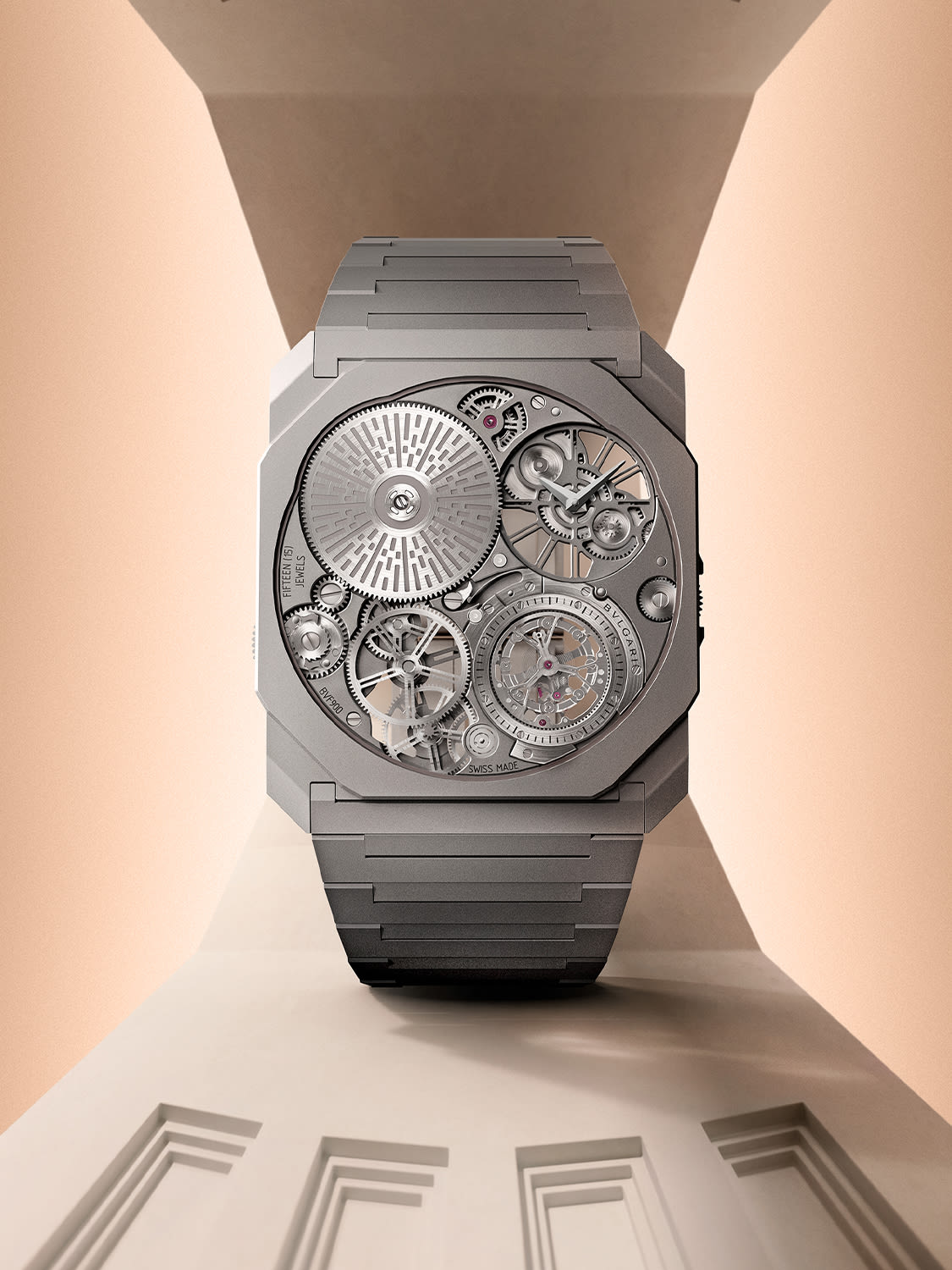
With the new Octo Finissimo Ultra Tourbillon, Bvlgari writes the 10th chapter in its record-breaking saga of ultra-thin marvels. Measuring a mere 1.85mm thin, the watch sets the world record for the thinnest tourbillon ever made.
This 20-piece limited edition builds on the legacy of the Octo Finissimo line, which has consistently pushed horological boundaries for over 10 years – from the 1.95mm-thick tourbillon (2014) to the minute repeater (2016), tourbillon chronograph (2020), perpetual calendar (2021), and COSC-certified chronometer in 2024. Yet, this latest marvel is more than a numbers game; it’s an extraordinary feat of modern engineering that carries with it a price tag of over S$1.1m.
To achieve such radically thin proportions, Bvlgari had to completely rethink conventional watchmaking principles. Boasting a 42-hour power reserve, the BVF 900 calibre is integrated directly into the tungsten carbide caseback, which doubles up as the mainplate. This ultra-dense, highly rigid material is essential in supporting the delicate architecture of components packed into a movement just 1.5mm high.
Central to this achievement is the flying tourbillon. Skeletonised and positioned for maximum visibility, it’s driven by a patented differential gear system that separates winding and time-setting across two steel planar crowns at 3 and 8 o’clock. These innovations eliminate the need for vertical crown components and shave precious millimetres off the overall thickness.
Aesthetically, the 40mm case stays true to the Octo Finissimo’s signature monochromatic grey palette and distinctive geometric silhouette. A microbead-blasted titanium bezel, case middle, and lugs accentuate the geometric profile, while a circular-grained steel ratchet engraved with geometric motifs adds visual intrigue and depth. An integrated microbead-frosted titanium bracelet – just 1.5mm thick, including the clasp – seamlessly completes this masterpiece.
GRAND SEIKO
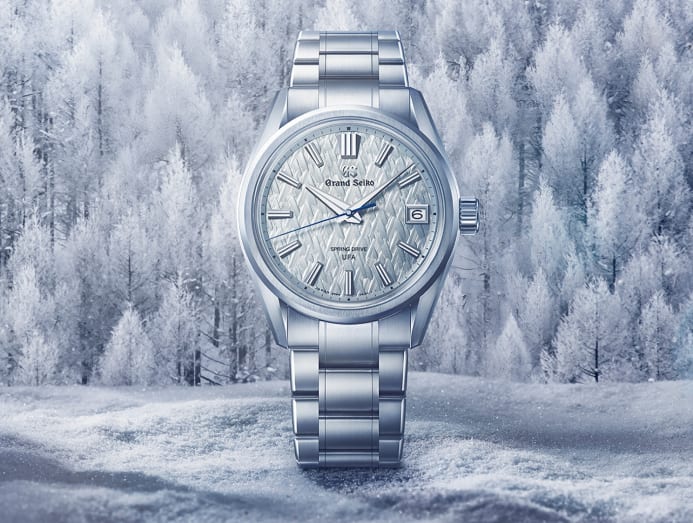
As watchmakers tirelessly pursue ever-greater precision, Grand Seiko quietly raises the bar with the Spring Drive U.F.A. (Ultra Fine Accuracy). According to the Japanese manufacture’s own research, this could be the most accurate wristwatch movement powered by a mainspring today. Unveiled as part of the Evolution 9 Collection, the new calibre 9RB2 boasts an extraordinary annual rate of ±20 seconds accuracy. To put that into perspective, that’s 20 seconds out of over 31 million seconds in a year.
To achieve this milestone, the movement relies on a specially aged quartz oscillator and newly designed IC (integrated circuit), a critical component that regulates the movement's speed with high precision. Both are vacuum-sealed to minimise environmental disturbances like temperature shifts and static electricity. Thermo-compensation is calculated precisely for each oscillator, ensuring consistently reliable timekeeping. And for the first time in a Spring Drive movement, a regulation switch allows for accuracy corrections during after-sales servicing.
Two ultra-refined 37mm models showcase this innovation: The High-Intensity Titanium (SLGB003) and 80-piece platinum boutique exclusive (SLGB001). Rendered in pale blue hues that vary in tone and depth, their dials reflect the frost-covered trees of the Kirigamine Highlands east of the Shinshu Watch Studio, where all Grand Seiko Spring Drives are produced. The titanium version features a silver-tinged blue dial and tempered blue seconds hand, evoking ice forests under crisp skies. The platinum edition’s deeper blue dial offers a refined contrast to the smooth sweep of a silver-toned seconds hand.
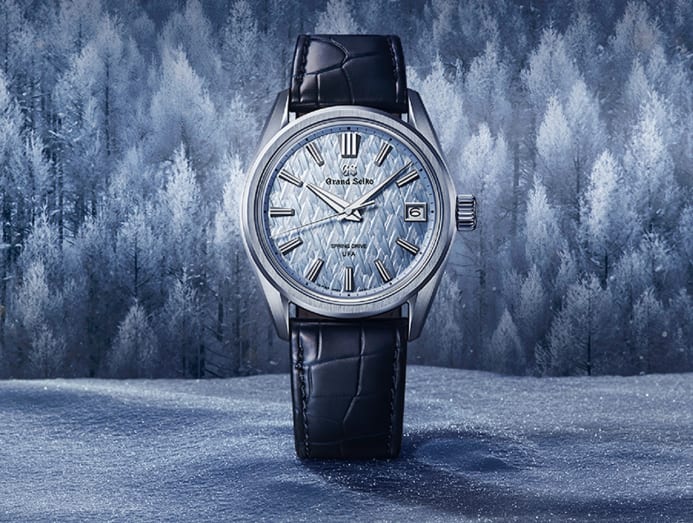
The Calibre 9RB2 is revealed in all its glory through a sapphire crystal caseback. Its bevelled, mirror-polished edges shimmer like frost, while the jewels gleam like stars in a Shinshu winter sky. Every surface reflects the seasonal beauty surrounding the watch’s birthplace.
Practicality is matched by comfort: The titanium model includes a newly developed three-step micro-adjustment clasp, operable without tools, for precise 2mm tweaks, while the platinum version is paired with a crocodile strap for classic elegance.
PARMIGIANI FLEURIER
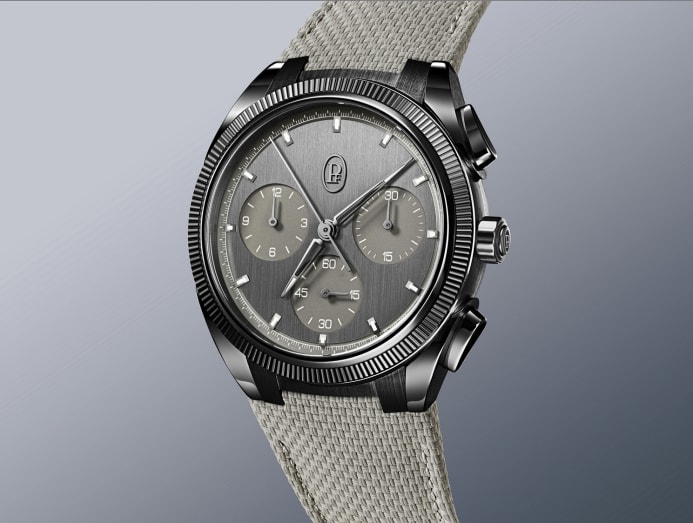
The high-end Swiss watchmaker breaks new ground in luxury sports watchmaking with the Tonda PF Sport Chronograph Ultra-Cermet, the world’s first timepiece crafted entirely from Cermet. Known for its exceptional hardness, scratch resistance, and lightweight qualities, the cutting-edge alloy – a high-tech fusion of ceramic and titanium – has previously been reserved for aerospace and engineering applications. The Cermet used here undergoes an extreme selection of fine powders and boasts a unique cool-to-the-touch sensation, which introduces a new sensory dimension to high-end horology.
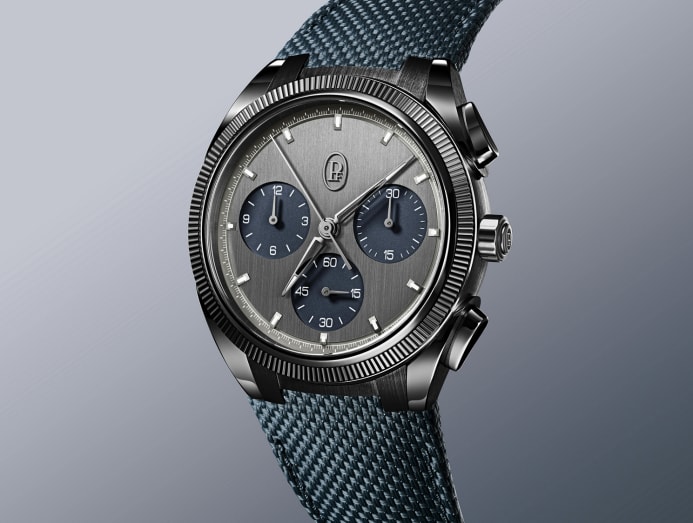
A total of 72 components – from the case, fluted bezel, crown and pushers to even the pin buckle – are fashioned from this material that took three years to perfect. The dial is coated in Blackor, a 9k gold-nickel alloy that lends it a distinctive grey-black hue, which beautifully enhances the timepiece’s metallic sophistication. Offered in two 42.5mm references of Milano Blue and London Grey, both chronographs feature matching subdials and textured rubber straps for a chic look.
Powering the watch is Parmigiani Fleurier’s COSC-certified PF070 integrated chronograph movement with a 65-hour power reserve. Adding to the technical allure are satin-finished openworked bridges, as well as a polished and sandblasted 22k rose gold rotor that are visible through the sapphire caseback.
ULYSSE NARDIN
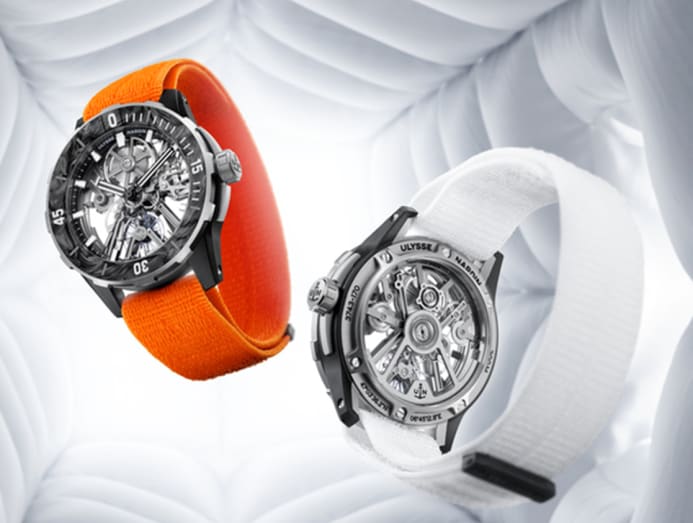
The dive watch has long been the workhorse of the horological world, typically defined by its substantial heft, rugged construction, and commanding wrist presence. It’s a formula that has remained largely unchanged since the 1950s – until now. Enter Ulysse Nardin, which has achieved the seemingly impossible with its game-changing Diver [AIR].
Weighing only 52g with its strap – and under 46g without – it holds the title of the world's lightest mechanical dive watch. Yet, in true Ulysse Nardin fashion, this radical lightness doesn’t sacrifice its serious underwater credentials. With a 44mm case water resistant up to 200m, a movement capable of withstanding shocks up to 5,000G, and an impressive 90-hour power reserve, the Diver [AIR] delivers professional-grade specs in a watch that weighs less than a tennis ball.
The secret lies in its skeletonised UN-374 manufacture calibre, which comprises 20 per cent material and 80 per cent air. When Ulysse Nardin designers removed material from the movement, they counterintuitively made it even stronger and more robust. This ingenious move was done by using the slender bridges to form triangles, a rigid shape often used in engineering and architecture to resist bending and warping. The bridges and other movement components are rendered in lightweight titanium that’s 90 per cent recycled, while the escapement features an ultra-light, upcycled silicon wafer that further reduces weight while ensuring precision.
The technological breakthroughs extend throughout the watch’s construction. The modular case construction combines a water-resistant, recycled titanium core with sides made from Nylo-Foil, a hybrid material incorporating repurposed fishing nets and carbon fibre salvaged from IMOCA racing yachts. Even the CarbonFoil bezel insert features 100 per cent upcycled carbon fibres from IMOCA boats that are chopped and compressed into a distinctive marbled pattern.
Despite all its technological innovation, the Diver [AIR] still feels like a proper tool watch on the wrist. The bezel rotates with satisfying clicks, while the lume is as bold as any traditional diver’s watch. A final flourish: Two interchangeable straps (in orange and white) ensure versatility in any environment.
VACHERON CONSTANTIN
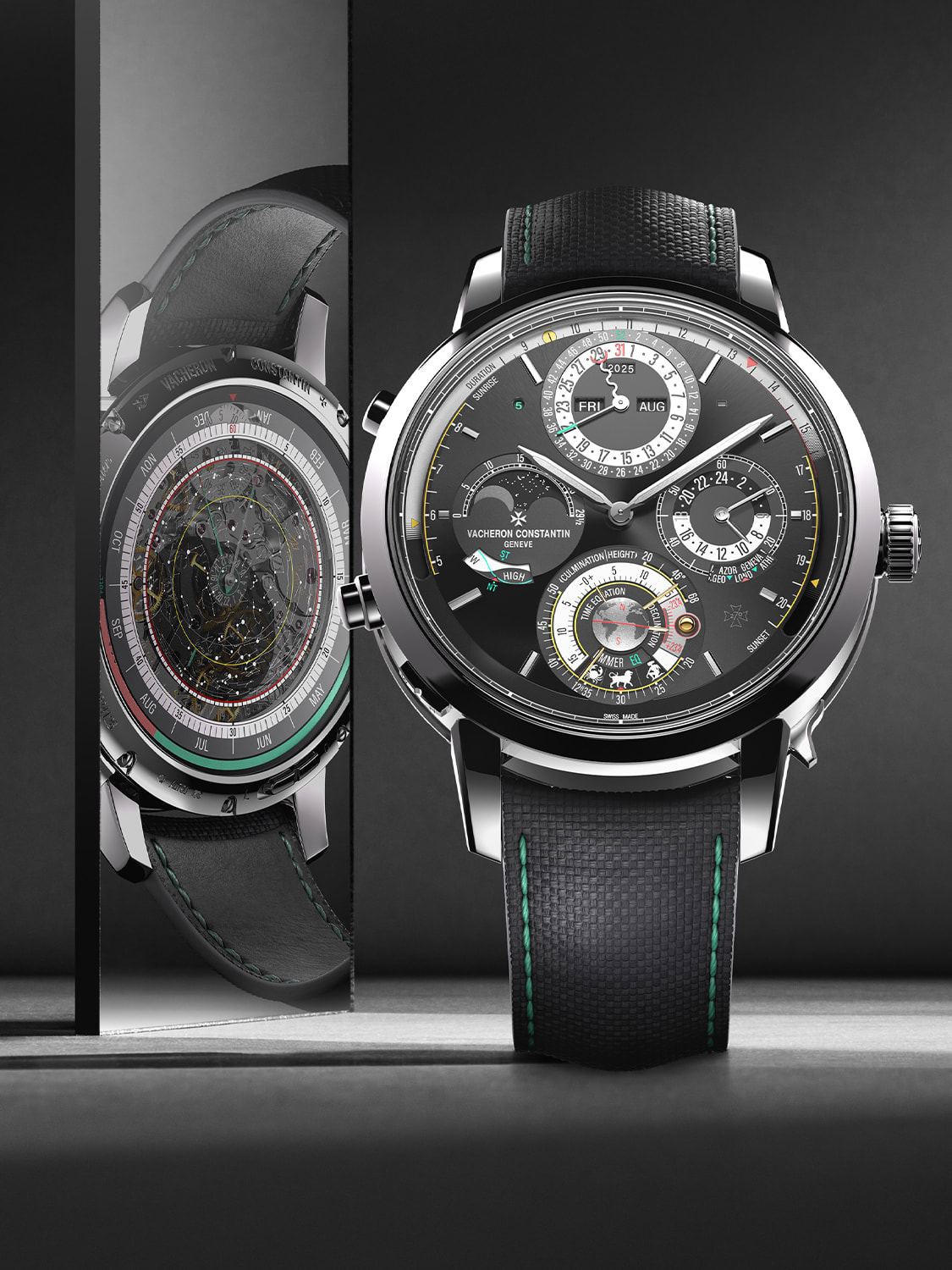
Vacheron Constantin once again defies the limits of haute horlogerie with the Les Cabinotiers Solaria Ultra Grand Complication – La Premiere, a fitting tribute to the Swiss watchmaker’s 270th anniversary. Housing an unprecedented 41 complications, this one-of-a-kind masterpiece is the result of eight years of dedicated research, development, and innovation. At the heart of the mechanical symphony beats the all-new Calibre 3655, a movement composed of 1,521 painstakingly miniaturised components, all housed within a 45mm white gold case that’s 14.99mm thick.
This double-sided marvel breaks new ground not only in mechanical sophistication, but also in terms of precision miniaturisation, pushing the limits of how much complexity can be achieved in a wearable watch. Its compact dimensions belie an intricate architecture achieved through revolutionary engineering techniques – most notably, an innovative plug-and-play modular system that neatly connects two intricately designed sections: A base calibre that integrates the time, chronograph, and chiming functions, and an additional module housing its rare astronomical displays.
The Solaria occupies a special place in horology, notably for its five innovative astronomical complications, four of which are dedicated to tracking the Sun’s position across the sky, including its altitude, culmination point, and angle of declination. A fifth complication marries a split-seconds chronograph with a representation of the celestial vault that enables the wearer to calculate precisely the length of time it will take for a selected star to reach the centre of his viewpoint. A previously unattained feat in mechanical watchmaking, it makes its world premiere on the Solaria. It’s significant to note that these functions have never been featured on a single wristwatch.
Equally remarkable is the watch’s innovative chiming mechanism, a Westminster carillon minute repeater, widely regarded as the most sophisticated chime sequence in watchmaking. Featuring four gongs and four hammers, this acoustic complication alone demanded seven of the 13 patent applications filed for this timepiece. The challenge was integrating the mechanism into a dense movement without compromising resonance and clarity. Vacheron Constantin engineers developed rectangular-section gongs anchored directly to the case, complemented by steel and gold hammers to maximise acoustic purity.
Despite its encyclopaedic complication count, the Solaria remains highly legible. Its front dial features four counters, two of which carry up to five functions each, arranged for clarity with a contrast-enhancing palette of black, white, and grey. The reverse side, which is dominated by the star chart and split-seconds chronograph, maintains visual balance through the thoughtful use of colour-coded indicators, notably red and green chronograph hands and a fuel gauge–style power reserve indicator.
The sheer technical complexity of Solaria’s Calibre 3655 is matched by its unparalleled finishing. Components are hand-decorated with no fewer than nine haute horlogerie techniques, including sunray brushing, circling, sandblasting, and brouillage. Even the smallest parts, such as the jewel sinks, barrel ratchets, and cam wheels, are finely polished.
Far beyond technical bravado, Vacheron Constantin has masterfully conjured up an entire cosmos for the wrist with the Solaria. A sophisticated interplay of time, sound, and celestial movement, it’s a feat not only in mechanical brilliance, but horological imagination.







